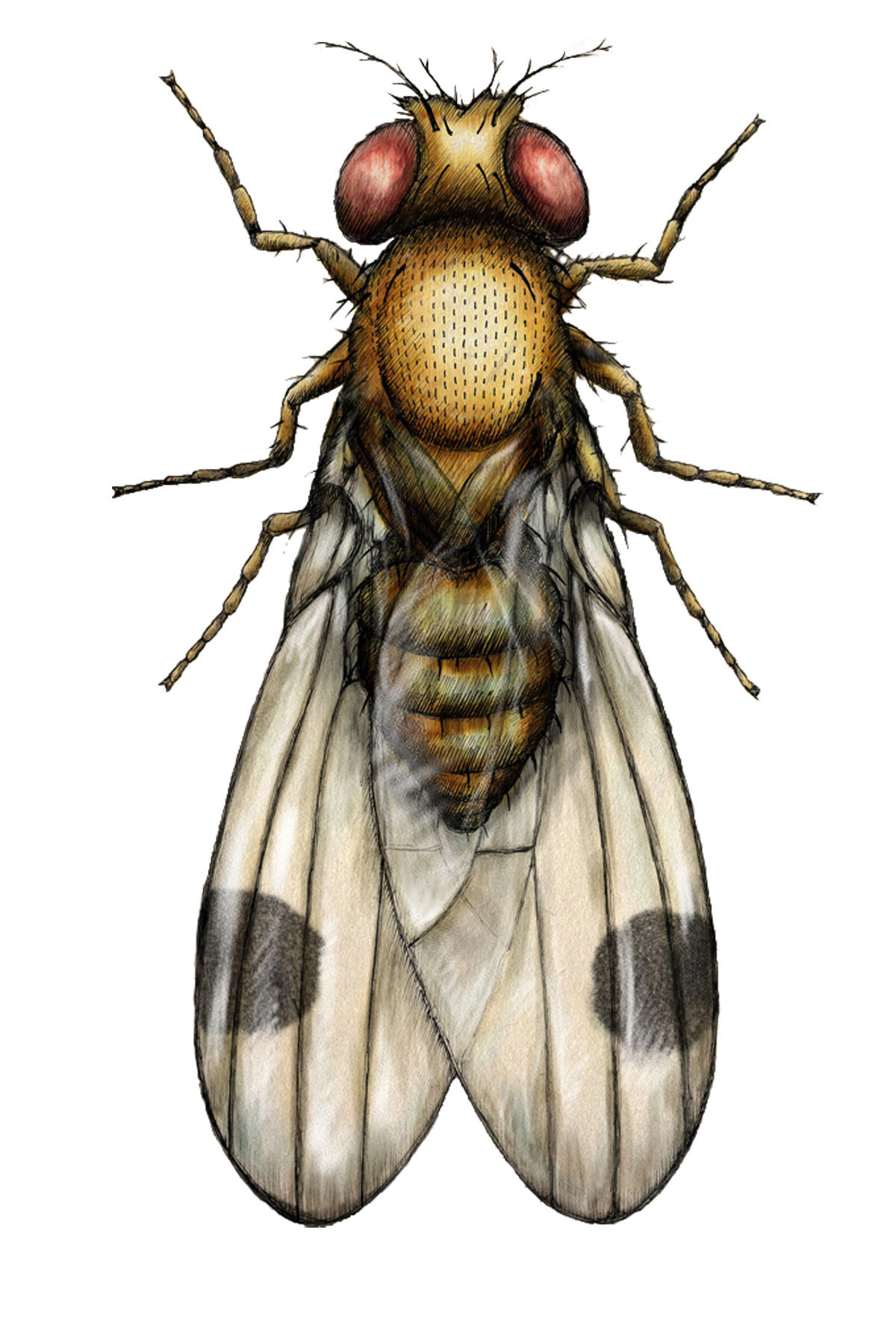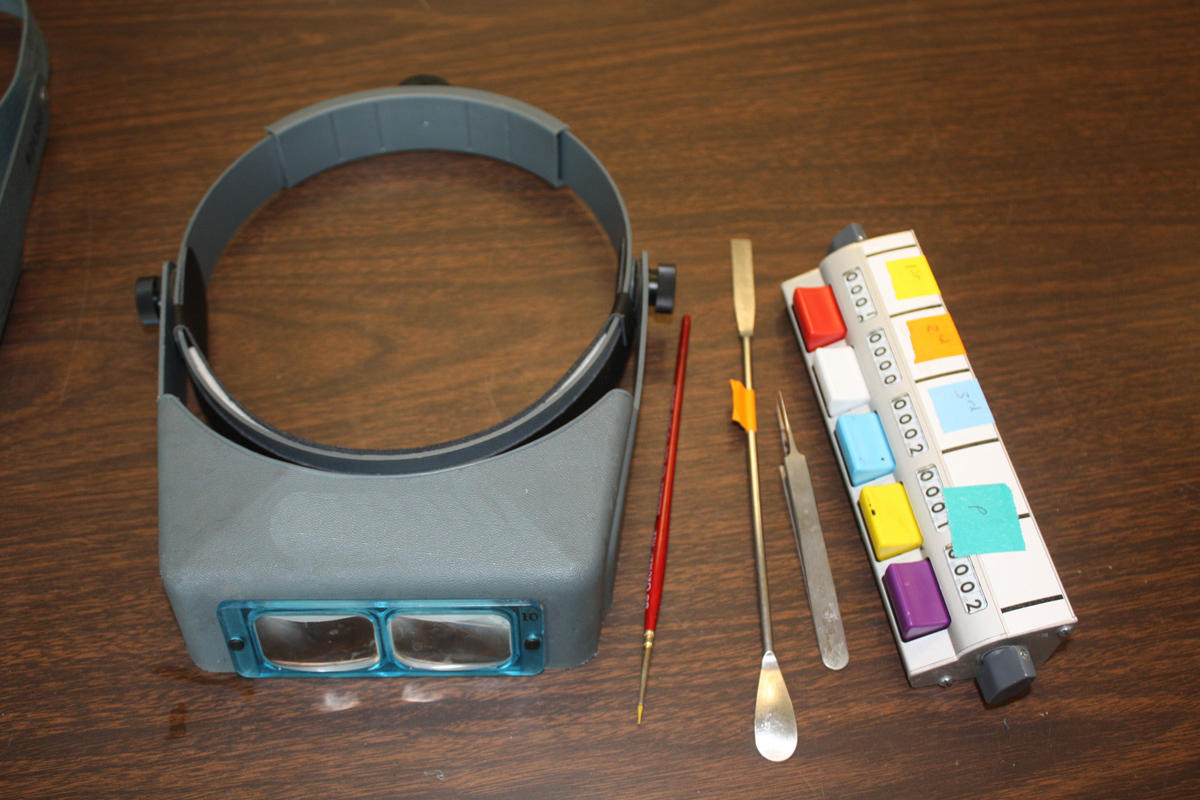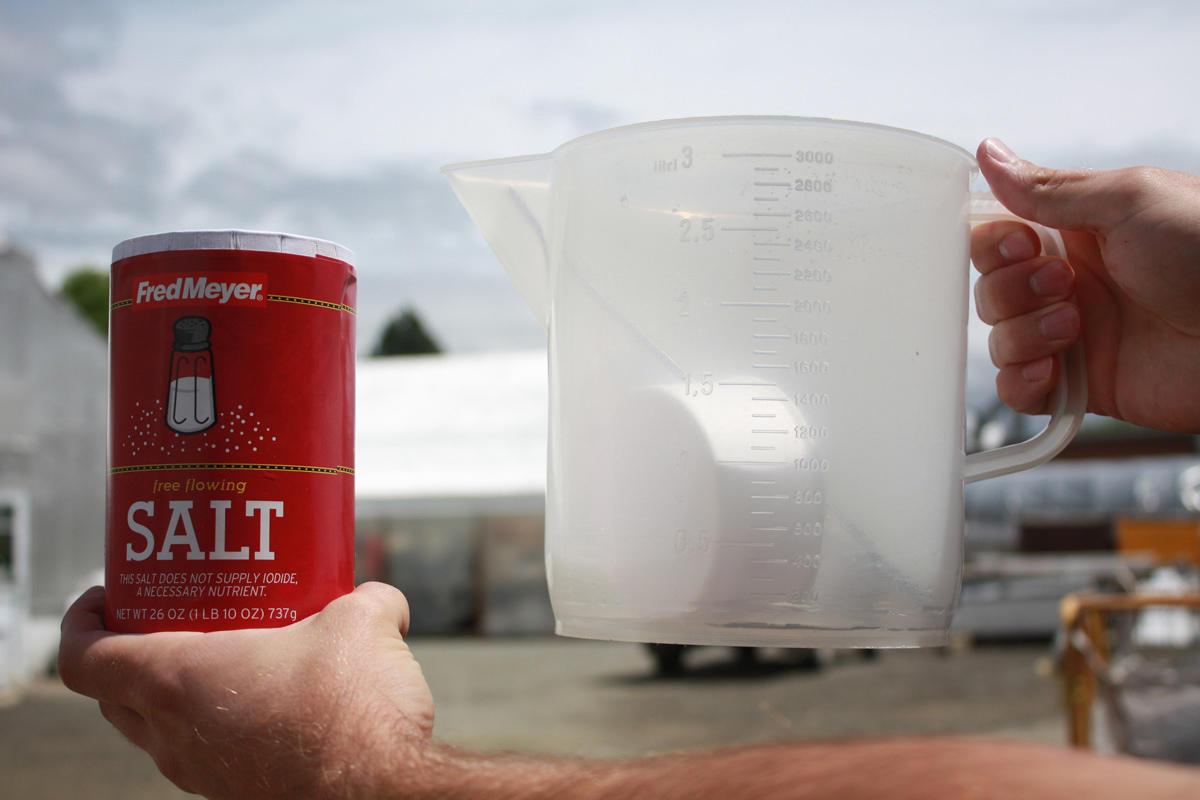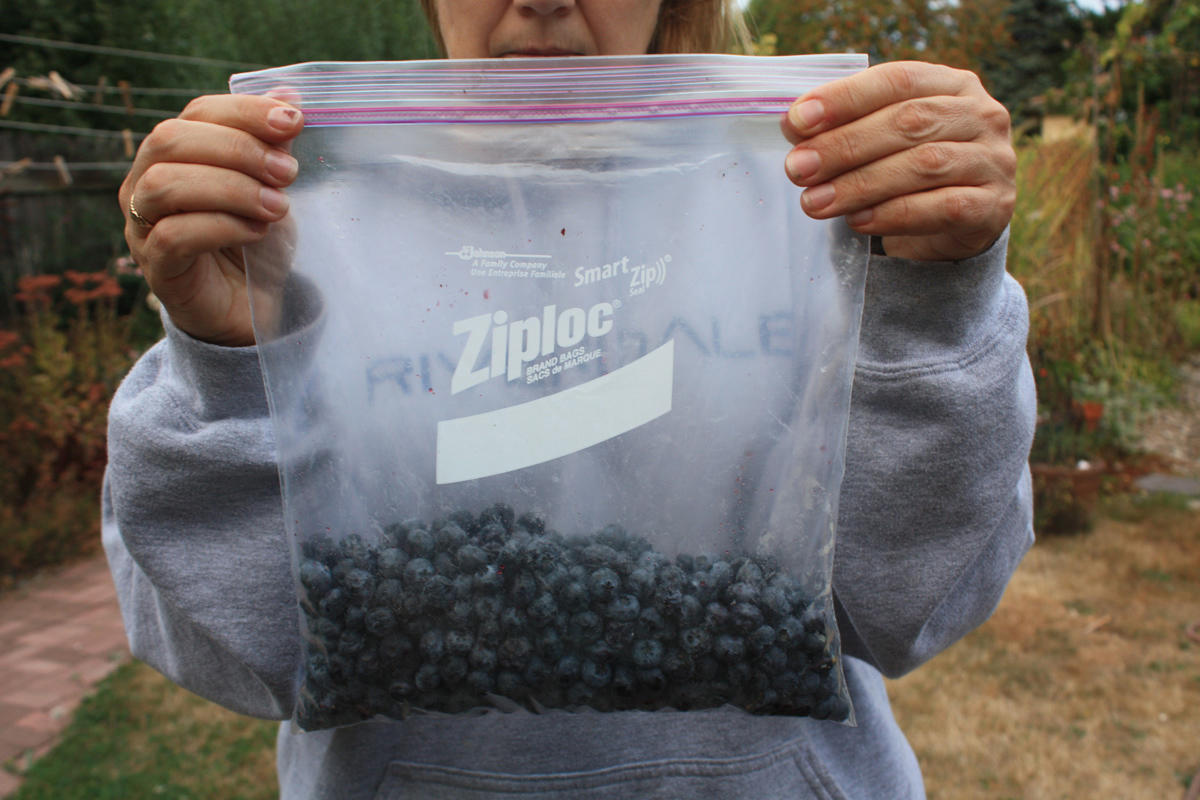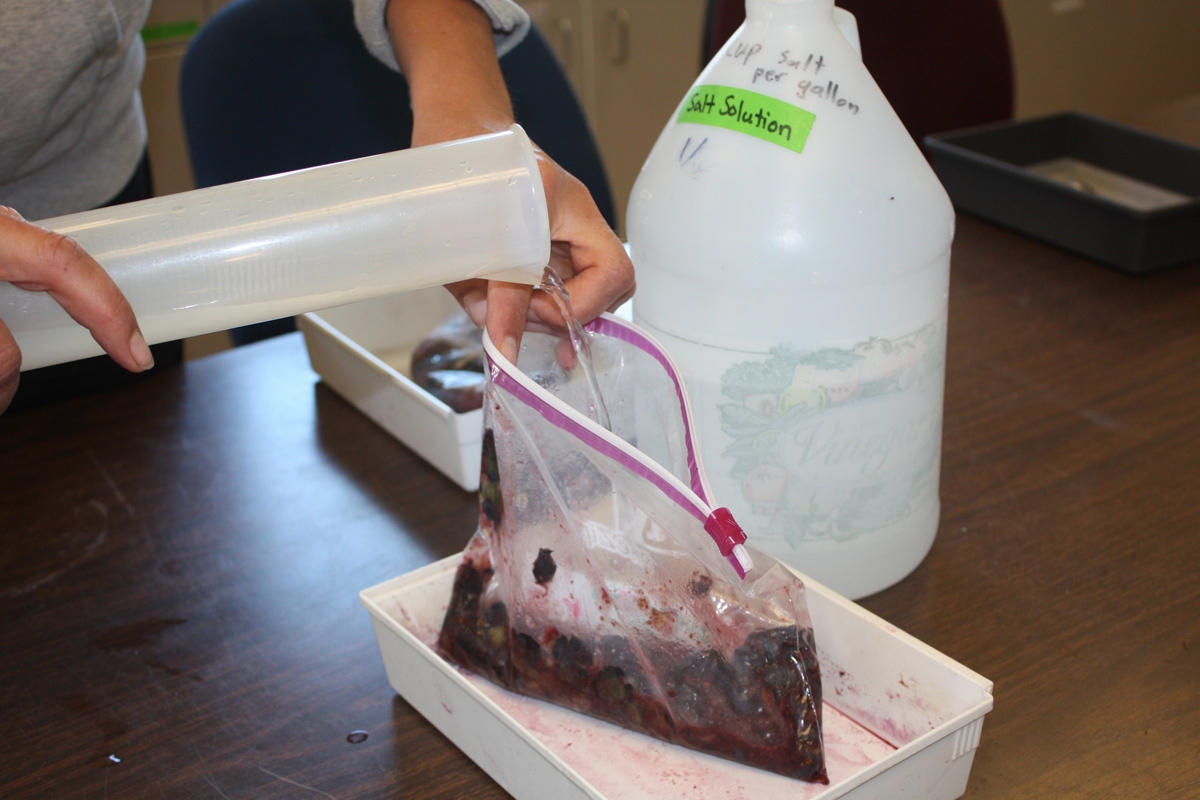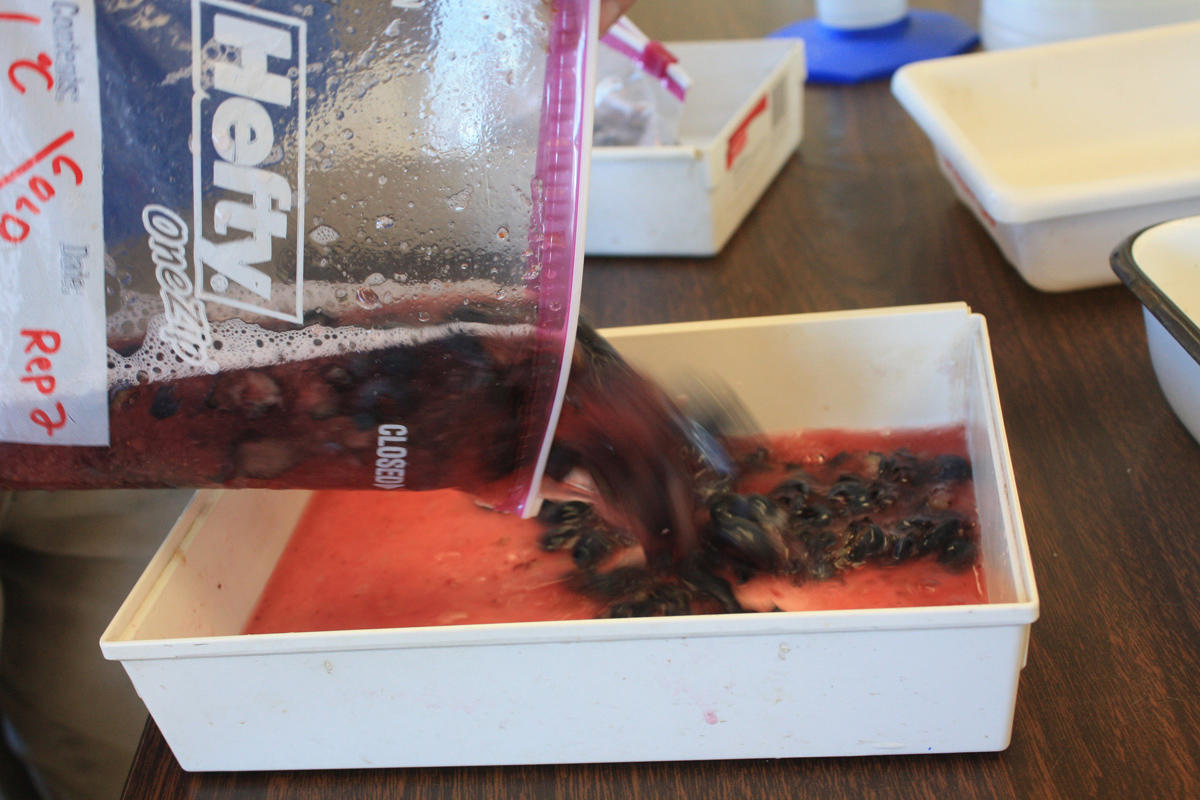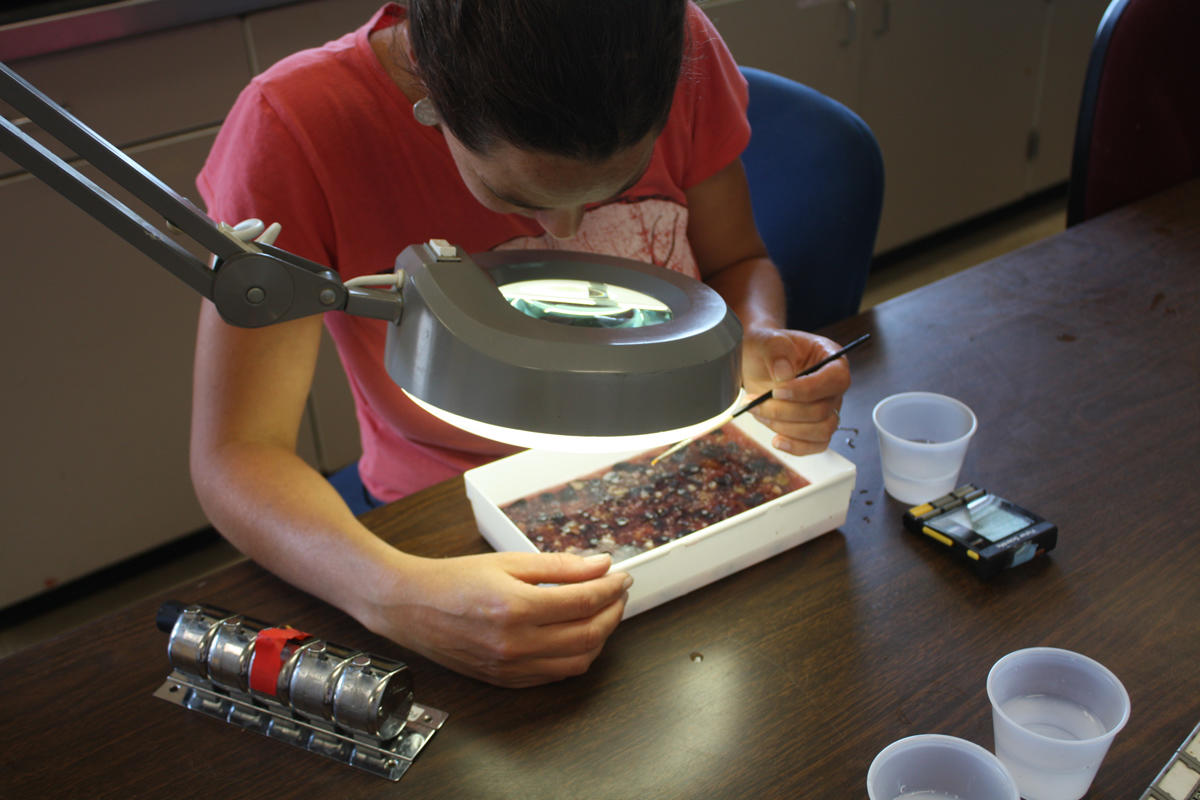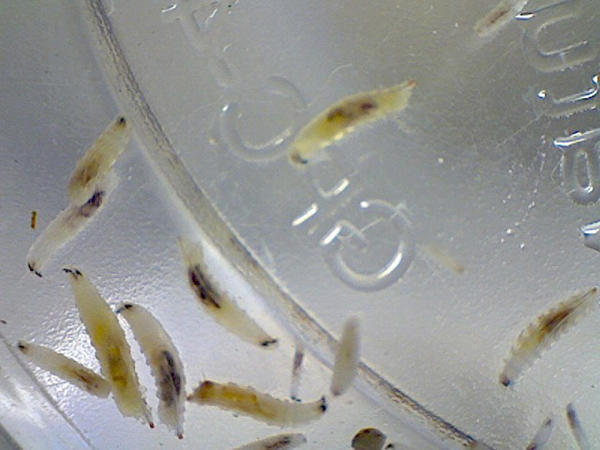STEP 1: Gather supplies
- White or black shallow tray
- Magnifying lens or magnifying headset, such as an OptiVisor
- Sealable plastic bags
- Forceps, fine paintbrush
- Stirring stick or spoon
- Salt or light brown sugar and water
- 1-gallon jug to hold solution
- Good lighting
- Optional: A wire mesh screen to submerge fruit
STEP 2: Prepare 1-gallon solution
- At least one day before testing, dissolve 1 cup of plain salt or 2.5 cups of light brown sugar in 1-gallon jug of warm water.
- Salt and measuring pitcher for mixing the solution."
- Agitate solution jug to hasten dissolving
- Re-agitate the solution the day of testing
STEP 3: Collect fruit
- Collect fruit with symptoms of damage from SWD or collect random samples of fruit
- Place fruit in a sealable plastic bag
- Seal the plastic bag and label it with the location of the fruit you collected.
- The more fruit you inspect, the more confidence you will have in the quality of the rest of the fruit.
- Label bag to reference collection location (For example: 8/2/14, row 88, plant #5, NE side)
STEP 4: Crush fruit in bag
- Crush fruit, but do not make a purée
- A rolling pin makes it easy to mash up the fruit and expose the pulp
- Use your fingers to crush any fruit not opened
- Avoid aggressive crushing that will damage larvae
STEP 5: Add solution to bag
- Mix and allow solution to penetrate fruit pulp
- Swish solution to distribute it among fruit debris
- Solution will irritate any larvae inside fruit and encourage them to leave fruit and rise to surface
STEP 6: Pour contents into shallow tray
- Cover crushed fruit completely with salt or sugar solution
- Most larvae will float to top for easy viewing
- Sugar will keep SWD alive longer, to see larvae move or to raise larvae to confirm species of fly
STEP 7: Examine for SWD larvae
- Choose a well-lit area
- Use magnifier (hand lens) or headset magnifier
- Examine surface closely for bobbing or floating larvae (approximately 0.7mm–5.4mm long)
- Look for larvae in the first few to 15 minutes
- Stir contents periodically to dislodge larvae from fruit and tray sides
- Use a wire screen to submerge fruit and to allow larvae to float
- Do not mistake SWD for plant parts, aphid skins, fruitworms, thrips, pulp threads, sap beetle larvae, larvae from other Drosophila species
- Count and record larvae, and track seasonal changes in numbers
- Use tab counter to record number of larvae
- The 7-step process described here is a guide and not a guarantee that you do not have an infestation somewhere in your crop.
Project supported by Agriculture and Food Research Initiative Competitive Grant No.: 2010-51181-21167; USDA National Institute of Food and Agriculture, Oregon State University-Crop and Soil Science Department, and U.S. Department of Agriculture, Agricultural Research Station, Horticulture Crops.
Trade-name products and services are mentioned as illustrations only. This does not mean that the Oregon State University Extension Service either endorses these products and services or intends to discriminate against products and services not mentioned.
Use pesticides safely!
- Wear protective clothing and safety devices as recommended on the label. Bathe or shower after each use.
- Read the pesticide label—even if you’ve used the pesticide before. Follow closely the instructions on the label (and any other directions you have).
- Be cautious when you apply pesticides. Know your legal responsibility as a pesticide applicator. You may be liable for injury or damage resulting from pesticide use.
© 2016 Oregon State University
Extension work is a cooperative program of Oregon State University, the U.S. Department of Agriculture, and Oregon counties. Oregon State University Extension Service offers educational programs, activities, and materials without discrimination on the basis of race, color, national origin, religion, sex, gender identity (including gender expression), sexual orientation, disability, age, marital status, familial/parental status, income derived from a public assistance program, political beliefs, genetic information, veteran’s status, reprisal or retaliation for prior civil rights activity. (Not all prohibited bases apply to all programs.) Oregon State University Extension Service is an AA/EOE/Veterans/Disabled.
